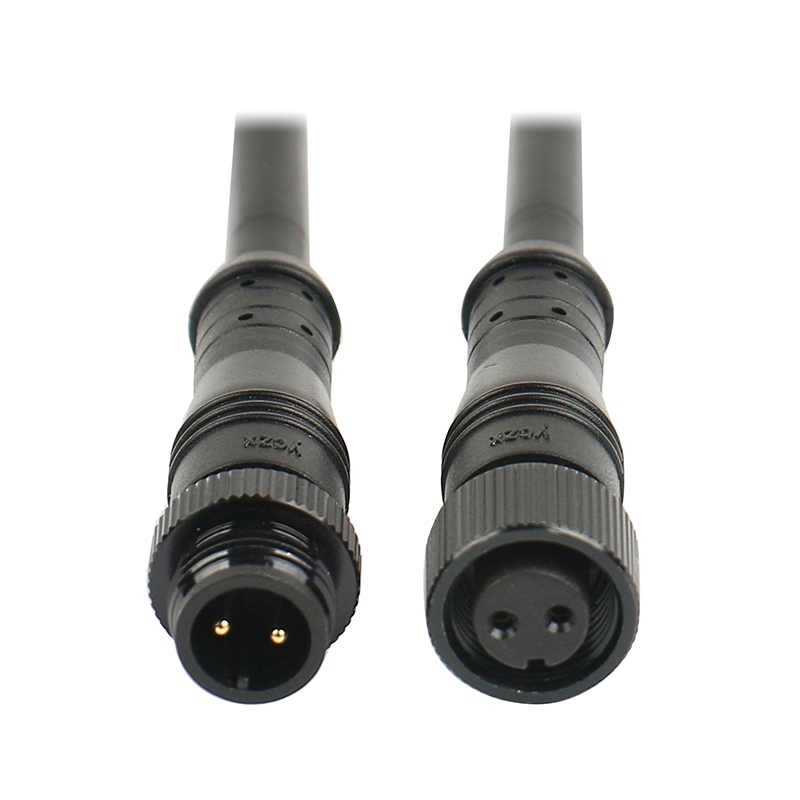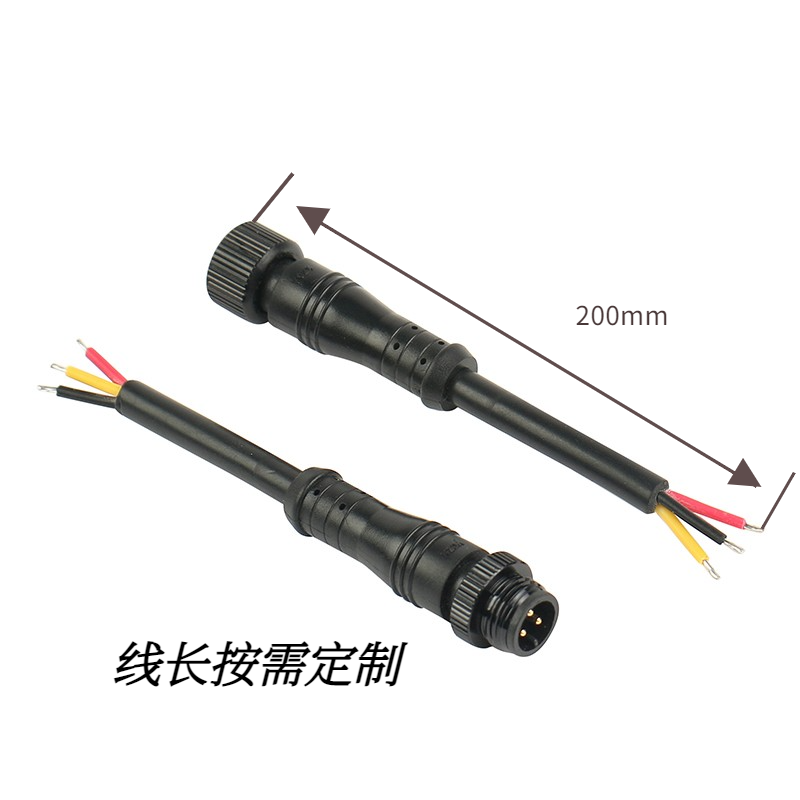News


News

Plug male and female: key components and correct application of electronic connectors
Release time:2024-11-01
viewed:454
In the field of electronics and electrical, plugs, as an important part of connectors, play a key role in connecting two active devices and transmitting current or signals. Plugs are divided into male and female. This design not only meets the connection requirements of different devices, but also ensures the stable transmission of current and signals. This article will explore the definition, distinction method, application scenarios and precautions of plug male and female in depth, aiming to help readers better understand the important characteristics of this electronic connector and correctly apply it to real life and work.

Plugs, also known as connectors or connectors, are key components for achieving electrical connections between electronic devices. In the classification of plugs, male plugs and female plugs have become important components of electronic connectors with their unique shapes and connection methods.
1. Male plug (male head, male terminal)
The male plug is one side of the plug, usually in the form of a protruding needle or columnar connector. This design allows the male plug to be easily inserted into the jack of the female plug to form a stable electrical connection. The male plug generally has a pointed head as a male terminal, or a head with a needle and a contact piece inside as a male plug. In addition, the male plug is usually marked with the letter J on the surface for easy identification by users.
2. Female plug (female head, female terminal)
The female plug is the counterpart of the male plug, which is usually a recessed hole or slot-shaped connector. The socket design of the female plug enables it to accommodate the insertion of the male plug, thereby completing the electrical connection. The female plug generally has a round hole on the head as a female terminal, or a female plug with a hole on the head and a contact piece on the outside. The female plug is usually marked with the letter K on the surface to distinguish it from the male plug.
The design of the male and female of the plug not only meets the connection requirements of different devices, but also ensures the stable transmission of current and signals through its unique shape and connection method. This design allows the plug to be widely used in electronic devices and becomes a key component for connecting various devices and achieving electrical connections.
The methods for distinguishing the male and female of the plug mainly include appearance shape, size and identification. The following will introduce these distinction methods in detail:
1. Appearance shape
The appearance shape is the most intuitive way to distinguish the male and female of the plug. Male plugs are usually convex pin-shaped or column-shaped connectors, while female plugs are concave hole-shaped or slot-shaped connectors. This shape difference allows the male plug to be easily inserted into the female plug jack to form a stable electrical connection.
2. Size
Plugs also differ in size. Generally speaking, the head of the female plug is larger than the head of the male plug. This size difference not only helps users easily distinguish between male and female plugs, but also ensures that the plugs can form a tight electrical connection when inserted.
3. Identification
Some plugs have obvious male and female identification on the appearance. For example, the male plug is usually marked with the letter J on the surface, while the female plug is marked with the letter K on the surface. These identifications allow users to easily identify the male and female type of the plug, thereby avoiding errors during the connection process.

Plugs are widely used in the electronic and electrical fields due to their unique shapes and connection methods. The following will introduce the application of male and female plugs in different scenarios in detail:
1. Application scenarios of male plugs
Male plugs are usually used in electrical equipment that requires external input signals. For example, chargers, headphones and other peripherals of electronic devices such as mobile phones and digital cameras usually adopt male plug design. These devices are connected to power or audio devices through male plugs to achieve current or signal transmission.
In addition, male plugs are also widely used in the field of industrial automation. For example, devices such as sensors and actuators usually use male plugs to connect to control systems to achieve real-time data transmission and remote control of equipment.
2. Application scenarios of female plugs
Female plugs are mainly used to connect various cables and device interfaces. For example, the power cord of a TV, the power cord of a computer host, and the data cable of a monitor usually adopt female plug design. These cables are connected to the device interface through female plugs to achieve stable transmission of current or signals.
In the field of industrial automation, female plugs also play an important role. For example, control devices such as PLC (programmable logic controller) usually use female plugs to connect to sensors, actuators and other devices to achieve data collection and control instruction sending.

The following points should be noted during the use of male and female plugs to ensure the normal operation of the equipment and personal safety:
1. Matching
The male and female types of the plug wire must match. If the male plug does not match the female plug, not only will a stable electrical connection fail to form, but it may also cause equipment damage or dangerous situations such as electric shock. Therefore, when using the plug, be sure to ensure the matching of the male and female types.
2. Insertion and removal force
When inserting and removing the plug wire, be careful to handle it gently and do not use excessive force. If the insertion and removal force is too large, the socket and device interface of the plug may be damaged, resulting in unstable electrical connection or equipment failure. Therefore, when plugging and unplugging the plug, be sure to maintain appropriate force.
3. Safety protection
Pay attention to safety protection during the use of the plug wire. First, the plug wire should not come into contact with water or electricity to prevent electric shock or short circuit. Secondly, the plug wire should also avoid contact with dangerous environments such as high temperature and high pressure to avoid burning cables or equipment. Finally, when using the plug, make sure that the device is turned off or in a power-off state to avoid the risk of electric shock.
4. Regular inspection and maintenance
The plug may be worn or contaminated during use, resulting in unstable electrical connection or equipment failure. Therefore, it is recommended that users regularly check the appearance and performance of the plug and clean and maintain the plug in time. If the plug is found to be damaged or worn, a new plug should be replaced in time to ensure the normal operation of the device.
5. Comply with the usage specifications
The plug usage specifications for different devices and scenarios may be different. Therefore, when using the plug, be sure to comply with the usage specifications of the relevant equipment and scenarios. For example, when using the plug in a humid or explosive environment, it is necessary to select a plug with waterproof or explosion-proof functions; in scenarios where high-frequency signals need to be transmitted, it is necessary to select a plug with high-frequency transmission capabilities, etc.
As an important part of electronic connectors, plug males and females play an important role in the electronic and electrical fields. By deeply understanding the definition, differentiation method, application scenarios, and precautions of plug males and females, we can better understand and apply this important feature of electronic connectors. At the same time, with the continuous development of electronic technology and the continuous expansion of application fields, plug males and females are also constantly innovating and developing. In the future, plug males and females will make more significant progress and applications in miniaturization and micro-miniaturization, high speed and high frequency, intelligence and networking, environmental protection and sustainable development.